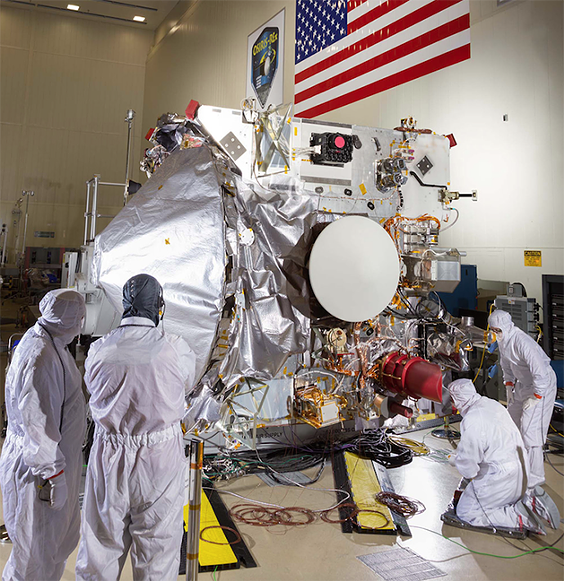After traveling over a billion miles through the heart of space, the robotic explorer has only a million more to go. The OSIRIS-REx space probe is nearing in on its target, the distant asteroid Bennu, to hopefully become the first U.S. spacecraft to return samples from an asteroid.
At nearly two years into its journey, on Aug. 17, the spacecraft's camera captured its first images of Bennu from roughly 1.4 million miles away. Bennu (named by a third-grader after the Egyptian deity representing the sun, creation and rebirth) is a 1,614-foot long spherical asteroid chosen for research due to it containing carbonaceous material, a key element in organic molecules necessary for life.
Led by the University of Arizona's Lunar and Planetary Laboratory, the billion-dollar OSIRIS-REx mission is part of NASA's "New Frontiers" program. From this mission, scientists hope to learn about the creation of life in the universe, the origin of our oceans and how to avoid future asteroid collisions.
"We are now in the vicinity of the asteroid," said Dante Lauretta, OSIRIS-REx principal investigator and professor of planetary science at the University of Arizona. "Closer than we have ever been even during the close approaches of the asteroid to the Earth."
OSIRIS-REx (a backronym for Origins, Spectral Interpretation, Resource Identification, Security, Regolith Explorer) launched from Cape Canaveral on Sept. 8, 2016. Traveling at roughly 32,000 miles per hour from Earth, the spacecraft is planned to arrive at Bennu on Dec. 3, and begin observing the asteroid's surface for 505 days from a distance of approximately three miles.
During this year-and-a-half of observation, OSIRIS-REx will perform several flybys of Bennu's north and south poles. From these observations, researchers will learn about Bennu's mass, makeup, and identify possible sampling sites.
"Bennu's low gravity provides a unique challenge for the mission," said Rich Burns, OSIRIS-REx project manager at NASA's Goddard Space Flight Center. "At roughly 0.3 miles in diameter, Bennu will be the smallest object that any spacecraft has ever orbited."
OSIRIS-REx will not be landing on Bennu to collect cosmic samples. Instead, the spacecraft will perform a very close flyby, blast the asteroid with gas to knock loose some rocks and dust, and extend a robotic arm to gather samples. Sample collection is scheduled for early July 2020. Afterward, the spacecraft will fly back toward Earth before jettisoning the "Sample Return Capsule" for landing in the Utah desert in September 2023.
According to NASA, the mission has five main objectives: Return a sample of pristine carbonaceous asteroid; map the global properties and chemistry of a primitive asteroid; document the texture and properties of the surface of the sampling site; measure the momentum and force of a potentially hazardous asteroid and whether light can change its trajectory (the Yarkovsky effect); and characterize the asteroid's properties for comparison with ground-based telescopic data on all asteroids.
Aside from providing crucial samples to understanding our ancient and future universe, Bennu has a close relationship with the Earth, literally. Bennu will pass within half a million miles of Earth in Sept. 2060, and has a 1-in-2,700 chance of impacting Earth around 2175.
All-in-all, the OSIRIS-REx mission is planned to last almost exactly seven years: Sept. 8, 2016 to Sept. 24, 2023. We aren't even two years in, and already this mission is gathering valuable data. On the flight to Bennu, the spacecraft captured high-resolution images of Jupiter and three of its moons: Io, Callisto and Ganymede.
"Now that OSIRIS-REx is close enough to observe Bennu, the mission team will spend the next few months learning as much as possible about Bennu's size, shape, surface features and surroundings before the spacecraft arrives at the asteroid," Lauretta said. "After spending so long planning for this moment, I can't wait to see what Bennu reveals to us."








